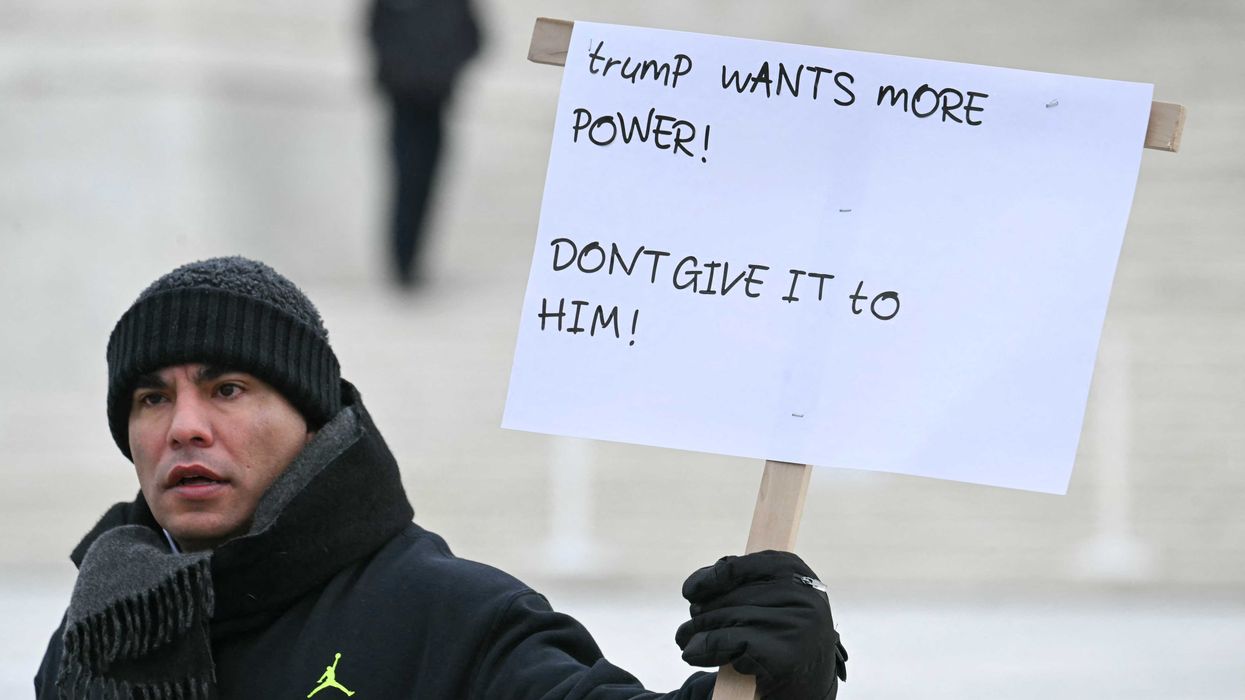GLENN: Twenty-nine-year-old advertising guy sits down, and he writes a book for his two daughters. He makes copies of it, and he gives it to some friends. And it starts to be passed around. And pretty soon, people are calling the bookstore saying, "How can I get a copy of this book?" They don't even know what it is. Because it was just a -- it was -- it was a Xerox copy of something that the guy had written for his daughters.
It wasn't too much longer that there were 8 million copies of that one book in print and a number one television movie of the year. It was called The Christmas Box. The author, the dad, the advertising guy was Richard Paul Evans. He sold more than 17 million books, written 26 novels. Four of his books have been made into television/movies.
In 2011, he called me and he said, "I have this idea for a seven-book series. It's called Michael Vey. And it is a story that I've just been told by publishers is too smart to be a kid's book." And I said, "Don't ever underestimate the youth." He said, "Right!"
He sent me a copy of the first book and Mercury, Inc., said, "We'll help you publish this." It's now been a best-seller. And the seventh novel is out now. It is the last, Michael Vey: The Final Spark. It comes out today. And I have not read this one. If it is like the other six, it is going to be thrilling to the end. And I'm going to be really upset that it is the last one. Richard Paul Evans, welcome.
RICHARD: Good to be here, Glenn. Thank you.
GLENN: So is this really the last one?
RICHARD: I don't know. It is for right now because I've been writing three books a year. And they offered me a million years to write the next one. I said, "I will have to write it from a psych ward." I go, "I am -- I am writing non-stop. I have no life." It's like, "I will snap."
GLENN: Yeah.
RICHARD: I go, "I'm done. I can't." So I need basically a year. I still have other contracts, finish them out. And then maybe come back.
And part of me doesn't want to do that because it's -- I love to keep something special.
GLENN: And this one was -- I mean, when you first talked to me about it, you were really, really clear that this wasn't -- this was almost downloaded to you.
RICHARD: It still is. Someone asked me how the book ends. And I go -- I look at book seven -- and there are things in book one, that if I had not put them there would not have -- book seven would not have been possible. And when I put them in the first book, I thought, "Where is this going? Why am I -- why is he growing in power? That has no point to the book."
There were some things that were happening that became completely relevant. I didn't know it until the last year.
GLENN: Why is this book downloaded like that to you?
RICHARD: Because I think there's a deeper message. I think it's a very spiritual message. It's by far the most complex thing I've ever written, even though --
GLENN: It's unbelievably -- and it's so consistent.
I mean, you've been writing this for eight years? Nine years?
RICHARD: Seven years.
GLENN: Seven years.
And I picked it up. I've only read the first chapter of this one, but it picks up right exactly where it was. I mean, the complexity of this story over seven years and seven books is really difficult.
RICHARD: Right. The French publisher said, "We want an arc for the whole thing." I said, "I have no arc. I don't know where it's going. I don't know how it ends." And it really wasn't until about nine months ago that I thought, "Oh, my goodness, really? That's what happens." I go, "This has actually followed some sacred Scripture all the way through." I go, "This is kind of amazing."
GLENN: Amazing.
RICHARD: You know, I told you at the beginning, like the names were downloaded to me. And then I realized that their initials spelled Mount Zion. That's bizarre. Right. That's just a bizarre coincidence. But I have found more coincidences like that throughout the book.
GLENN: And you think that this book is -- I mean, it is -- my son -- I don't think my son has enjoyed a series -- I don't even think Percy Jackson made it through all of them and liked them through the end. And this has been seven years. And every summer, we read it. And love it every single time. It's a tradition with us.
And I don't think there's another book series that he has made it all the way through that he has liked all the way through. Because he grew -- you know, seven years. That's half his life. And he's grown up with this now. And it's still as relevant to him now -- you know, you think -- you're 13 years old, okay -- it's not. It's not. You know, and he's reading -- he's reading everything.
He was reading I.T. for the love of Pete. But he loves it. And he loves the messages in it. And it's pretty remarkable what's happening with the -- the youth that are reading it.
RICHARD: I -- that's absolutely true. I had a young woman -- you remember our first book signing, they were like mostly adults. They looked like my adult book signings with a few kids.
My -- we just did the launch party for Michael Vey. We had between 4 and 5,000 kids come to it. So -- but a few weeks ago, I received a letter from a young women in Paris.
And she said, Mr. Evans, you probably have been wondering where I've been. And I said to my assistant, "Who is this?"
He said, "Oh, she writes about every week." And she says, "I'm not doing well. I'm in the hospital. I tried to kill myself." She said, "I have one friend in this world, and it's Michael Vey. And he gives me the strength to go on. Thank you."
And I said, "Let's get her immediately." And I told her that Michael loves her. I love her. And that just how Michael has to face the Elgen and his Dr. Hatches, you will too. But you're going to do okay. And just hang in there. This is a hard time of life.
And I think that's why I have so many youth who have disabilities, who have struggles. Even at my book signing, one group came. And I just -- I held one young woman. She kept crying. She said, "My father died during the second book." She goes, "Michael Vey has been there with me the whole time through it." She goes, "I don't know what to do now that the seventh book is out." So the book means -- to me, it's a very spiritual book in a sense that -- I mean, it's here to heal and help kids.
GLENN: Tell the story. For anybody who hasn't read it, tell the story.
JEFFY: Michael is a 15-year-old boy with Tourette's Syndrome, who discovers he has electricity in his body. And he can shock people, basically. But he doesn't know what this is about and why he has this power. He learns that he's one of 17 kids who were an accident, who kind of an MRI machine. And that there's a group trying to find them because they realize that they can create a better race than what's on this earth right now. And that's what this is about.
STU: There were a lot more than 17 kids that were accidents in this world. You know that. There were a lot of crazy things that have happened, just to be clear.
(laughter)
GLENN: You -- you have Tourette's. Your son has Tourette's.
RICHARD: Yes.
GLENN: But this is not -- what's interesting about this is I think there's -- every kid is in this book, no matter if you were the outcast or you were the popular one. You were the bully or you were bullied. Every kid is in this book.
And I think that is the secret of this, is they -- everybody -- every kid who reads it, sees themselves. Finds themself in that character. Or you knew that character growing up.
RICHARD: I agree. You know what's been interesting about this, Glenn, is that the publishing world has largely ignored it. Remember we were sitting here and the book was number one on the New York Times. And the Wall Street Journal did a story on the next big YA book, and it didn't even mention Michael Vey. It was not only number one, it was six times higher than the book next to it. Even today, it's like, I had a book signing with 5,000 people --
GLENN: Why is that?
RICHARD: I don't know. I don't know.
I've been attacked by having a male hero, as if it's a bad thing. Boys need heroes right now. It's really bad.
GLENN: Big time. You know what I compare this to is the Flash series that is now on television, where it's -- it's a boy hero. He's -- he's a great role model. Loves his parents. Has all of these great things going for him. And I think it's what people want. But I don't think that's what the media wants. I don't think they -- they don't want that. They don't want something that, you know, a boy who loves his mother and treats his mother with respect and treats others with respect and does the right thing. And, yes, he is the hero of the story. And while there are other girls around that also are heroines in the story, you know, they're separate and distinct. And they all have their own thing. I don't think that's what -- I don't think that's what -- that's what the people want. I don't think that's what culture is saying is acceptable.
RICHARD: That's exactly right. That's true.
We -- we see it -- when they came out with Maze Runner, and it was a young boy series. And it was one of the few YA books that made money in the movies. And it's like, well, big surprise. It's like, well, boys like this. They want to read. And the girls will read -- now, there are some very, very strong girl characters. Taylor is just as strong --
GLENN: Yeah, really strong.
RICHARD: Just as strong as Michael. He takes counsel from her. This isn't a gender war. These are people trying to get along. And like you said, I remember a school teacher saying to me, Michael loves his mother. She was, like, freaked out. Like, he loves his mother. He says so.
It's like, well, yeah, most boys do love their mother. This is reality. So I think Michael Vey has this truth to it that resonates with kids. It's also just -- I hear from -- I hear every single day, multiple letters every day for the last seven years saying, you got my kid to read.
I mean, I hear it every single day. It's like, this is the only book or only series my kid has ever read, especially the reluctant male readers. One school teacher said, in 18 years, it's the first time every student in the class finished the assignment. One boy took his grade from an F to an A-minus because he practically memorized Michael Vey. I said, well, because you have to give them books they like to read. I was a reluctant reader.
GLENN: Yeah, so was I.
RICHARD: I didn't read till I found The Hobbit. The Hobbit changed my world. I realized that reading actually could be fun. And the Hobbit is a very intelligent book, right?
GLENN: Yeah.
RICHARD: And I pick it up. It's like, there's no pictures in here. Why would I want to read this? The next thing I know, it's like, I want to be --
GLENN: For me -- for me it was Sherlock Holmes. And I think -- and I think this happens with -- with -- with Michael Vey. I read Sherlock Holmes. I was probably 18. Maybe 19 years old. I hated reading. Found that book. And I read it, I think, two or three times. Because I was like, no other book could be this -- I mean, this is really good. Right?
And so you just read it over and over again, until you get sick of it. And you're like, I wonder if there's something else. And then once you go down that rabbit hole -- Raphe hated to read. He told me -- he must have been six. Right around this time. Never going to -- I don't like to read, Dad. I don't like to read books. I don't.
Now, Tania and I feel like the worst parent in the world, because we're always saying, "You say that to him. I'm not going to say that to him." Put the book down. Go out and do something. Go play a video game. Put the book down. Go put the book down.
And I think Michael Vey had a lot to do with that. The book comes out today. If you have not read the series, this is the last in the series. Does it have a satisfying ending?
RICHARD: Yes. It has a very powerful ending.
STU: Does it have a Death Star in it?
RICHARD: No. And no Tyrannosaurus Rex. But I read the last page to my assistant, and she broke down crying. And she goes, my friends. My friends -- you'll love -- you'll love the ending. The big question is, where is Michael Vey? It will shock you, no pun intended, when you find out what's really going on. There's so many reveals. You'll feel like, "Wow. After seven years, I finally get it."
GLENN: Is there a TV show coming?
RICHARD: It looks like. At the launch party, we had Hollywood executives there.
GLENN: Excellent.
RICHARD: And the crowd was crazy.
GLENN: Excellent. Excellent. This will be a great TV show. It is a great series. Michael Vey: The Final Spark. If you haven't started, start from the beginning. You will not regret it. And you can read it with your kids. It is a fantastic series.
(music)
STU: Michael Vey: The Final Spark is the seventh book in the Michael Vey series. You can buy all of them. He didn't take the other ones off the market. So you can catch up whenever you want. We'll tweet the link @worldofStu on Twitter.

 ALEX WROBLEWSKI / Contributor | Getty Images
ALEX WROBLEWSKI / Contributor | Getty Images
 JIM WATSON / Contributor | Getty Images
JIM WATSON / Contributor | Getty Images Joe Raedle / Staff | Getty Images
Joe Raedle / Staff | Getty Images AASHISH KIPHAYET / Contributor | Getty Images
AASHISH KIPHAYET / Contributor | Getty Images